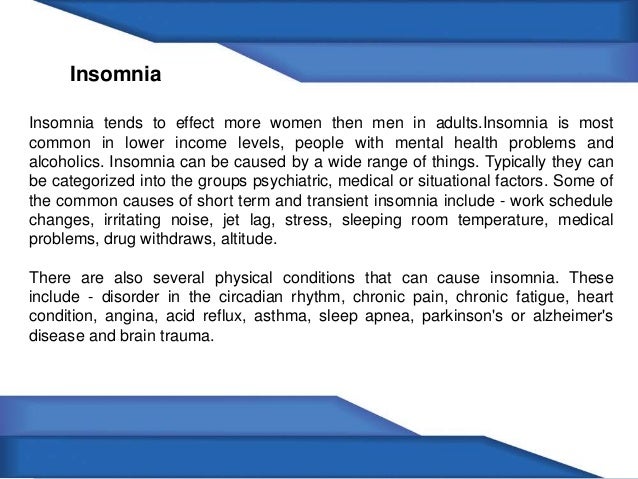

Sleep maintenance insomnia can be caused by anxiety. Sleep onset insomnia is characterised by an inability or struggle to fall asleep, whereas sleep maintenance insomnia is characterised by an inability or. Idiopathic insomnia, previously called childhood-onset insomnia, is defined as a lifelong difficulty in initiating and maintaining sleep and resulting in. This can lead to feeling tired and exhausted during the day. People with sleep maintenance insomnia often wake up several times during the night and have trouble falling back asleep. Quantitative electroencephalographic (EEG) analyses may indicate that individuals with insomnia have greater high-frequency EEG power relative to good sleepers both around the sleep onset period and during non-rapid eye movement sleep, a feature suggestive of increased cortical arousal. Sleep maintenance insomnia is a type of insomnia where people have difficulty staying asleep during the night. Anyone who has Chronic Insomnia should see a. Most often, insomnia is defined by the presence of an individuals report of difficulty with sleep. The severity of these sleep impairments does not always match the individual's clinical presentation or subjective complaint of poor sleep, as individuals with insomnia often underestimate sleep duration and overestimate wakefulness relative to polysomnography. Insomnia, or problems going to sleep or staying asleep, can become chronic if it lasts more than three months. Polysomnography usually shows impairments of sleep continuity (e.g., increased sleep latency and time awake after sleep onset and decreased sleep efficiency (percentage of time in bed asleep) and may show increased stage 1 sleep and decreased stages 3 and 4 sleep. Insomnia is defined as difficulties of initiating and maintaining sleep, early awakening and poor subjective sleep quality despite adequate opportunity and circumstances for sleep with impairment of daytime performance.


 0 kommentar(er)
0 kommentar(er)
